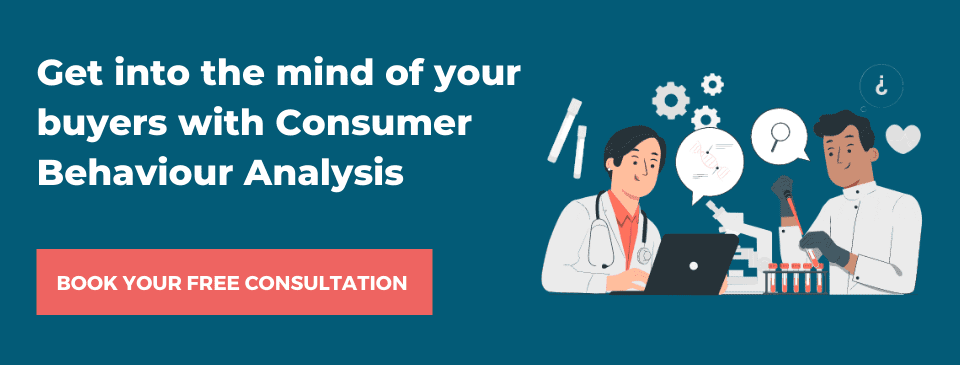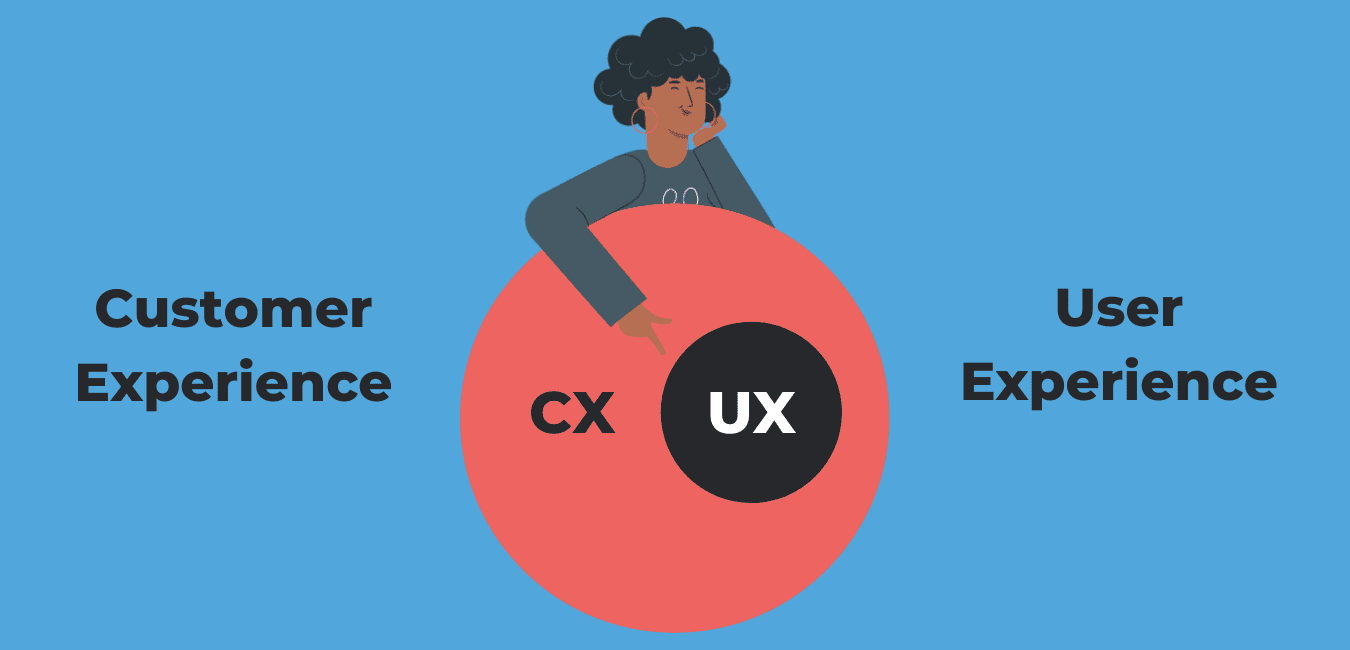CX vs UX: What’s the difference between Customer Experience and User Experience?
“Website User Experience (UX) is all about digital product usability and Customer Experience (CX) is about how your customers feel throughout the customer journey. Better engagement paired with the right emotions is what drives long-term loyalty.”
The terms CX and UX are very often confused or used interchangeably, whilst for most, it’s still quite unclear what’s the difference between these two very important digital marketing terms. In this article, we’re going to sort things out by looking a little closer into the difference between CX vs UX and why they are so important for your eCommerce business.
- What is CX (Customer Experience)?
- What is UX (User Experience)?
- Why CX is important for your eCommerce business?
- Why UX is important for your eCommerce website?
- Is UX part of CX?
- What is the difference between UX and CX?
- Which is more important between CX vs UX?
- CX vs UX: Final thoughts & What to do next
What is CX (Customer Experience)?

When thinking about what is CX in digital marketing, a simple definition would be that CX covers all the interactions a person has with your brand. Customer Experience is the way people perceive their relationship with your organisation, which incorporates everything from the first impression and reputation to becoming a customer and making those much-wanted repeat purchases. Ultimately, the feeling that customers have about your company and brand directly results from their customer experience. According to research, customers tend to spend 5 times more if their customer experience is good.
In a nutshell, CX refers to how users perceive:
- Your brand positioning, including values and mission
- Your core messages & how they make them feel
- Your customer service
- The sales process
- Your brand reputation
- Advertising campaigns
- Product/Service delivery
- Pricing
A good thing to remember is that your customer experience tends to be measured by your net promoter score (a widely used market research metric that typically takes the form of a single survey question in which customers get asked the likelihood of them recommending your company, products and services to their friends or family), customer loyalty, and customer satisfaction as a whole.
What is UX (User Experience)?

UX deals with the interaction between your customers and your products/services and the experience they receive from that interaction. User experience is usually measured through brand engagement, success rate, error rate, abandonment rate, time to complete a task, and clicks until completion. Let’s dig a little deeper into each of these metrics.
- Brand engagement – the emotional commitment people have to your brand; it’s more than just awareness, it’s loyalty and word-of-mouth marketing, through which emotional and/or rational attachment between customers and your business forms; this, in turn, can have either a positive or negative impact on their purchase intentions
- Success rate – the % of correctly completed tasks by users (e.g., 5 users attempted to register on your website, however, only 3 of them succeeded and 2 failed); from there, you will need to find out why the 2 failed, as higher the success rate, the better your website UX
- Error rate – the number of mistakes users make when interacting with your product/service, which gives you a good idea of how user-friendly and intuitive your website is; the higher the error rate, the more usability issues
- Abandonment rate – the % of users who abandoned a task before completing it, where the reasons for this can vary from struggling with difficult navigation to forcing people to update their software
- Completion time & clicks to completion – the amount of time users need to complete a task (the shorter the processing time, the better your website UX
Why CX is important for your eCommerce business?
Customer Experience relates to customer satisfaction and how willing are they to pay for your products and services. In other words, if your customer is satisfied, the more likely they are to stay loyal to your brand. This, in turn, translates into them becoming your brand advocates and recommending your products to their friends, family, and colleagues. A very important thing to remember is that nowadays, people are not only seeking to buy your products.
“Your customers are looking for brands that are being responsible and align with their values and dreams that can positively impact and transform their lives.”
This is exactly why, now more than ever, eCommerce businesses must rethink their digital marketing processes so that they can deliver exceptional and high-quality customer experience. This is only if they want their customers to come back, of course!
Why UX is important for your eCommerce website?
User Experience optimisation across all platforms and devices has become a golden rule in digital marketing. No matter how fancy or interesting your offers are if your users don’t know how to navigate your website, they will never come back to it.
There are many common UX design mistakes that can kill your conversions, so knowing how to design the best eCommerce landing pages is a crucial aspect that you need to get right straight from the beginning. To remember is that no features or benefits will ever outweigh website usability! UX connects your users and potential customers with your products and services, which leads to an increase in your brand loyalty. UX website design focuses on customer research and analysis, A/B testing, and much more. In case you missed it, we have an awesome article on how to run A/B testing for conversion rate optimisation that you should check out!
Is UX part of CX?

Here is where the answer is a clear yes! For example, you might work on your website UX as part of a CX program when designing a questionnaire or survey form that you will then use to collect valuable customer feedback. In this situation, website UX is a very focused and specific part of a wider CX plan.
This is why CX extends beyond UX, as it is concerned with your brand as a whole, not just the customer’s engagement with specific products and services. Remember that your products are not the totality of your brand, and thus, not the totality of your customer experience. In essence, UX is a very big part of CX, however, CX contains many aspects outside of a product that UX doesn’t.
What is the difference between UX and CX?
Are CX and UX different? The answer is once again yes! However, they should never be considered completely separate if you want to win the loyalty of your users and customers.
For example, a good website UX gives customers and users the ability to:
- Find information quick and easy on your website
- Complete any desired tasks with much ease
- Search Web pages without any difficulty
On the other hand, good CX gives customers and users the ability to:
- Have a good and professional interaction with your company
- Feel positive about their overall experience with your brand and everything associated with it
You might have the best advertising campaigns, brand recognition, sales team, and organisation structure (which are all CX related factors). But if your customer’s interaction with your website, mobile apps, software and products (which are all UX related factors) create barriers and challenges to the completion of their desired tasks, your overall CX efforts will fail in the long term.
Which is more important between CX vs UX?
UX is a very important part of CX, and each plays a crucial role in the overall success of any of your marketing efforts and campaigns. Both aspects can either positively or negatively affect your brand reputation and customer loyalty, which will in turn greatly affect your customer experience.
There will always be an ongoing need to balance the needs of your users and customers and the needs of your eCommerce business if you want to stay on track with all your marketing campaigns. With the new Google algorithm update for 2021 paired with IoT – The Internet of Things, CX and UX are becoming more and more a part of your customers’ everyday life, as well as for businesses. With these in mind, UX doesn’t start or end only with your eCommerce website. Entering the world of omnichannel marketing means interacting with your customers wherever they are, especially as they expect impeccable experiences at all times.
Accelerator tip
When it comes to optimising your CX for the modern consumer, focus on creating a mobile-friendly and intuitive website UX, appeal to people’s senses and emotions, build great product pages and personalise every single marketing activity or project. This includes tailored content, product recommendations and promotions for your customers, but always remember, it all has to be based on their actions, circumstances, needs and wants. We hope you didn’t forget why you need to know your target audience by now!
And don’t forget to survey your customers with basic tools such as Survey Monkey and see how they currently engage using HotJar.
CX vs UX: Final thoughts & What to do next

We hope that now is a little more clear why each interaction can affect your customer’s probability of visiting your website on different devices and making a purchase. All areas of your eCommerce business must work harmoniously together to ensure that all customer contact points are tested on friction, optimised and that they go above and beyond what your competitors are offering.
How would you feel if you could get into the mind of your buyers? Luckily, now you can! Understanding your customer’s behavioural patterns to get the full picture of how their customer journey looks on your website will help you get more returns from all your marketing advertising spends.
With Consumer Behaviour Analysis, you can now measure the emotions and feelings of your eCommerce website visitors by carefully analysing their online interactions with your site, landing pages, email marketing, mobile apps and products design! Stop guessing what your customers think and feel, and instead, start delivering exactly what they want and need. Book your FREE Consumer Behaviour Analysis Consultation with us, and let’s find simple solutions that will deliver great results for your eCommerce business quicker than you can spell “Jack Robinson” (it never gets old)!





